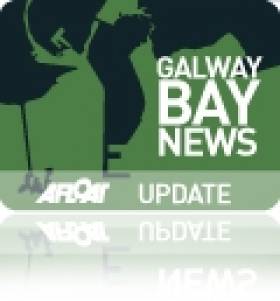Displaying items by tag: HANSA 303
Disabled Sailing Champs Hailed a Great Success In Galway
#disabledsailing – Galway Bay Sailing Club (GBSC), for the first time in it's history, very proudly hosted an "All Ireland" sailing event for sailors with a disability. This national event brought together the largest collection of disabled sailors ever assembled in Galway and in Ireland for a great weekend of competitive sailing.
This was the first time in Irish Sailing history that both juniors and adults with a disability competed together in races over Saturday and Sunday 19th and 20th July.
Due to its stability the Hansa 303 is ideal for disabled sailors. Sailing is one of the very few activities for people with a disability that achieves parity with able bodied peers on the water. The thrill, excitement and freedom experienced by all sailors becomes universal.
The weekend stared off with very light winds. 15 boats registered; 19 sailors with a disability competed. The first signal handed race was run over both days. The winner was Georgina Griffin from Kinsale, second Caolan McCarthy, Kinsale and third Gary Allen from GBSC.
Winners in the other categories were: Shane Barker, Dun Laoighaire; Lia Teahan O Connor, Kinsale and Isobel keane GBSC.
Integration was the real winner – all sections of Galway Bay sailing club got involved – the race experts, sailors from dingy to cruising to juniors got stuck in so that we had every eventuality covered.
Without our sponsors this event could not have been possible:
The week before our event wheelchair users found the boat yard more accessible thanks to very generous sponsorship from Cold Chon Ltd who tarred a large section of the dingy park making it more accessible and wheelchair friendly. Delicious beef burgers and smoked salmon was provided by the Castlemaine Droney Group and KPW did all the design and print. Along with this sponsorship a defining element of the weekend success was the warm welcome, vibrancy and support from the 50 + volunteers!
Our legacy?
Well for starters we all have made a bunch of new friends. We have raised the profile of sailing in general and in particular for those with disability. We have mixed junior and adult sailors and are able to offer sailing to adults now with the new hoist loaned for this occasion. (We are seeking sponsorship to retain this hoist). We've broken through some personal internal and external barriers!
Final word over to the sailors:
Kerry Mussen "Amazing, 1st thing I've found that makes me want to go out the door"
Sean had a wonderful time - to quote him "Best Weekend Ever".
On behalf of Belfast Lough Sailability I would truly like to thank you all for hosting such a great event over the weekend. Our sailors and helpers had a wonderful time and we look forward to welcoming you to Carrickfergus next year.
Anne Taylor
Chairperson
Belfast Lough Sailability























